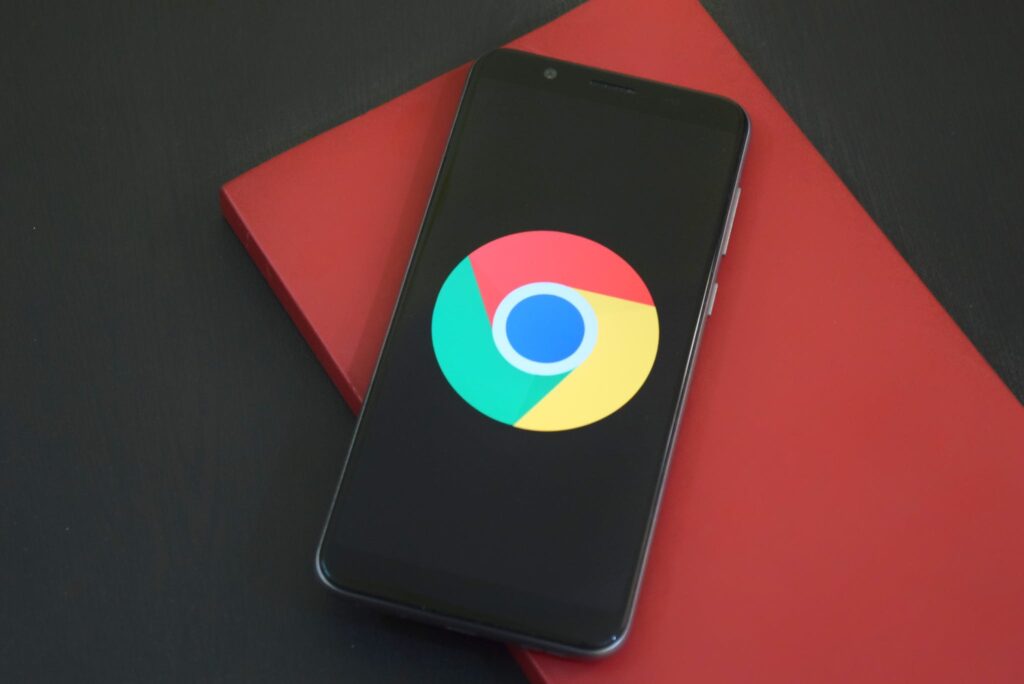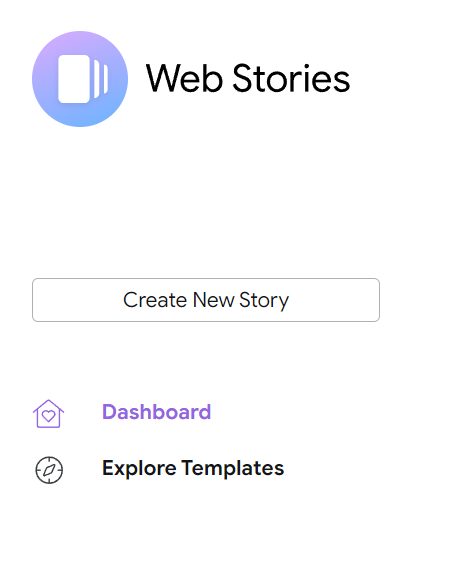Google Web Stories Creation Simplified
There are some affiliate links below, but they are all products I highly recommend. For more info, view my disclosure here.
Are you looking for an innovative way to boost your website’s engagement and drive more traffic? Try Google Web Stories! The Google Web Stories format allows you to tell a good story with visually appealing, short-form content that is optimized for mobile viewing.
Google Web Stories are essentially a collection of full-screen, interactive pages that are designed to be easily discoverable on mobile devices. Here’s an example:
The first thing you need to know about creating Google Web Stories is that they are not just another form of social media. They are a unique, standalone format that is optimized for search engines and can help you reach a wider audience.
Unlike traditional social media posts, these visual stories are designed to be discoverable through search engines, making them a powerful tool for driving organic traffic to your website.

Sign up for exclusive access to our resource library, including this branding guide!
To create a Google Web Story, you will need to follow a specific web story format that is optimized for mobile viewing. This includes using high-quality visuals, creating engaging headlines and descriptions, and incorporating interactive elements like animations and videos.
With Google’s web story creation tools, you can create stunning stories that are sure to capture your audience’s attention and keep them coming back for more.

Understanding Google Web Stories
Google Web Stories is a format for visual storytelling. It is a mobile-focused format that offers a simple drag and drop visual editor that enables content creators to create engaging stories that are optimized for mobile devices.
Web Stories are similar to social media stories, but they offer a more immersive experience with interactive elements that can be added to the story pages. The stories are presented in a vertical format that is optimized for the screen sizes of mobile phones.
The Google Web Stories plugin provides various tools for creating visual content, including a cover image and visual elements that can be added to the story pages. It also supports interactive experiences that allow for dynamic consumption experience.
Google Web Stories are built on the AMP (accelerated mobile pages) technology, which means that they load quickly and offer a simple functionality. The aspect ratio of the stories is fixed at 9:16, which is the same as social media stories.
Web Stories offer a format for media assets that can be used to create engaging stories that are optimized for mobile users. The stories can be used to present long articles in a more visually appealing way, and they offer a grid view that allows readers to browse through the stories easily.
Google Web Stories are becoming a popular way to present content on mobile devices. They offer a simple, engaging way to present content that is optimized for mobile users.
Overall, Web Stories offer a new format for visual storytelling that is optimized for mobile devices. They offer a simple, engaging way to present content that is optimized for mobile users.
Using the WordPress Plugin
If you have a WordPress website, you can create Google Web Stories by using the Web Stories plugin. This plugin is designed to help you create and publish Web Stories directly from your WordPress website.
The Web Stories plugin integrates with the WordPress media library, making it easy to upload and manage your Web Story images and videos. You can also use the plugin to create new Web Story posts, just like you would create any other post on your WordPress website.
When you create a new Web Story post, you’ll be taken to the Web Story editor. This editor is designed to help you create visually stunning and engaging Web Stories that will capture your audience’s attention. You can use the editor to add text, images, videos, and other elements to your Web Story.

The Web Story editor also includes a variety of formatting options, such as bold and italic text, lists, and images. These formatting options can help you create a more engaging and visually appealing Web Story.
Once you’ve created your Web Story, you can publish it directly from the Web Story editor. Your Web Story will be added to the WordPress directory, making it easy for other WordPress users to discover and share your content.
Overall, the Web Stories plugin is a powerful tool that can help you create engaging and visually stunning Web Stories directly from your WordPress website. By leveraging this plugin, you can create Web Stories that will capture your audience’s attention and drive traffic to your website.
Creating Your First Web Story
Ready to take the first step towards creating your own Google Web Story? Follow these simple steps to create your first web story:
- Open your WordPress plugin dashboard and click on the Web Stories icon.
- Click on “New Story” to create a new page for your story.
- Choose the best way to create your story. You can either start with a blank page or use one of the pre-designed templates. I personally like to create them in Canva (720 x 1280 px), but the templates work well too!
- Add text, images, or short videos to each card to make your story more engaging.
- Click the Document tab and add your title, a poster image (I usually use the first page of the story with the title visible) and add a description.
- You can adjust the time of each slide, add background audio, and set the page advancement to auto or manual. I generally leave it on auto at 7 seconds, but you can test different settings on stories to see which your audience prefers.

Remember, creating your first web story may seem overwhelming at first, but take it one step at a time and you’ll soon get the hang of it.
Optimizing for Google Search and Discover
When creating Google Web Stories, optimize them for Google Search and Discover to ensure they reach the widest possible audience. Here are some tips to help you do just that:
1. Use Relevant Keywords
Make sure to use relevant keywords in your Web Story’s title, description, and content. This will help Google understand what your story is about and show it to users who are searching for related topics.
2. Use High-Quality Images and Videos
Google Discover and Google Images are great sources of traffic for Web Stories. To optimize for these platforms, make sure to use high-quality images and videos that are visually appealing and relevant to your story.
3. Use Analytics to Track Performance
Google Analytics is a powerful tool that can help you track the performance of your Web Stories. Use it to monitor traffic, engagement, and other metrics to see how your stories are performing and make adjustments as needed.
4. Aim to be the Best Result
When optimizing your Web Stories for Google Search, aim to be the best result for your target keywords. This means creating high-quality, informative content that answers users’ questions and provides value.
By following these tips, you can optimize your Google Web Stories for maximum reach and engagement.
Designing for Mobile Devices
When creating Google Web Stories, keep in mind that the majority of your target audience will be viewing your content on their mobile devices. This means that your design should be optimized for smaller screen sizes and touch-based interactions.
One way to ensure that your Web Stories are optimized for mobile devices is to design them in a vertical format, similar to Instagram Stories. This format is ideal for mobile users who are accustomed to scrolling through content on their phones.
Another factor to consider is the screen size of the mobile phone. You should design your Web Stories to be easily viewable on a variety of screen sizes, from smaller phones to larger tablets.
To make your Web Stories visually appealing, consider using bold colors and high-quality images. Also, keep in mind that the text should be easy to read on a small screen, so choose a font that is legible and not too small.
By designing your Web Stories with mobile devices in mind, you can create content that is visually appealing and easy to consume for your target audience.
Here’s are two Google Web Stories examples I created that performed REALLY well, along with two I’ve published on this site.
DIY Date Night – Romantic Backyard Camping Web Story
Om Shanti Pups – Green Smoothie Dog Treat Web Story
Syndicating Stories for Social Media
When it comes to creating engaging stories for social media, it’s important to keep in mind the platform you’re using. Each social media platform has its own unique features and audience, and you should tailor your content accordingly, however, what works on one platform can do great on another as well!
For example, Instagram Stories are a great way to showcase behind-the-scenes content, share quick tips, or highlight a product or service. You can use features like polls, questions, and stickers to encourage engagement from your audience.
Facebook Stories, on the other hand, are a great way to reach a wider audience and connect with your followers on a more personal level. You can use them to share updates, promote events, or showcase your brand’s personality.
No matter which social media platform you’re using, create visually appealing content that grabs your audience’s attention. Use high-quality images and videos, and consider using bold text or graphics to make your story stand out.
Another key to creating engaging stories for social media is to keep them short and sweet. Most social media stories have a limited time frame, so you’ll need to get your message across quickly and effectively.
Finally, don’t be afraid to experiment with different types of content and see what resonates with your audience. Whether it’s a how-to tutorial, a funny meme you made, or a heartfelt story, the key is to create content that your followers will enjoy and engage with.
Overall, creating engaging stories for social media requires a mix of creativity, strategy, and a deep understanding of your audience and the platform you’re using. By following these tips and experimenting with different types of content, you can create stories that will help you connect with your followers and grow your social media channels.
Monetizing Web Stories
Creating Google Web Stories is a great way to engage your audience and increase your website traffic. But did you know that you can also monetize your Web Stories? Here are some ways to do it:
Adding Affiliate Links
One way to monetize your Web Stories is by using affiliate links (always disclose affiliate links!!). If you mention a product or service in your Web Story, you can include an affiliate link to that product or service. If someone clicks on the link and makes a purchase, you earn a commission.
Inserting Story Ads
Another way to monetize your Web Stories is through story ads. Your ad network can include ads in your Web Stories just like they would on regular web pages. However, make sure that the ads are relevant to your content and not too intrusive. You don’t want to turn off your audience with too many ads.
Link To Your Other Posts/Pages
You can also monetize your Web Stories by linking to your regular web pages. If you have a product or service that you sell on your website, you can include a link to that page in a related Web Story. This will drive traffic to your website and increase your sales or ad revenue. You could also offer a value-packed freebie on the page that your Story points to, and encourage signups to your mailing list!
Google Web Stories Life Span
When creating content for Google’s web stories format, keep in mind their fleeting nature. Web stories tend to only appear for a limited time in Google’s featured carousel. They’re designed to provide interesting bits of content rather than evergreen articles.
This means web stories have a much shorter shelf-life compared to traditional blog posts or web pages that remain online indefinitely. The content you create for web stories should captivate readers in the moment but may not have longevity. Also, there’s no rhyme or reason on what’s going to take off. It’s all about experimenting and finding what works for your niche!
Focus on tapping into trending topics and current events that align with your brand. While web stories can help grow traffic and engagement in the short-term, balance web stories with other evergreen content better optimized for long-term discovery and performance.










